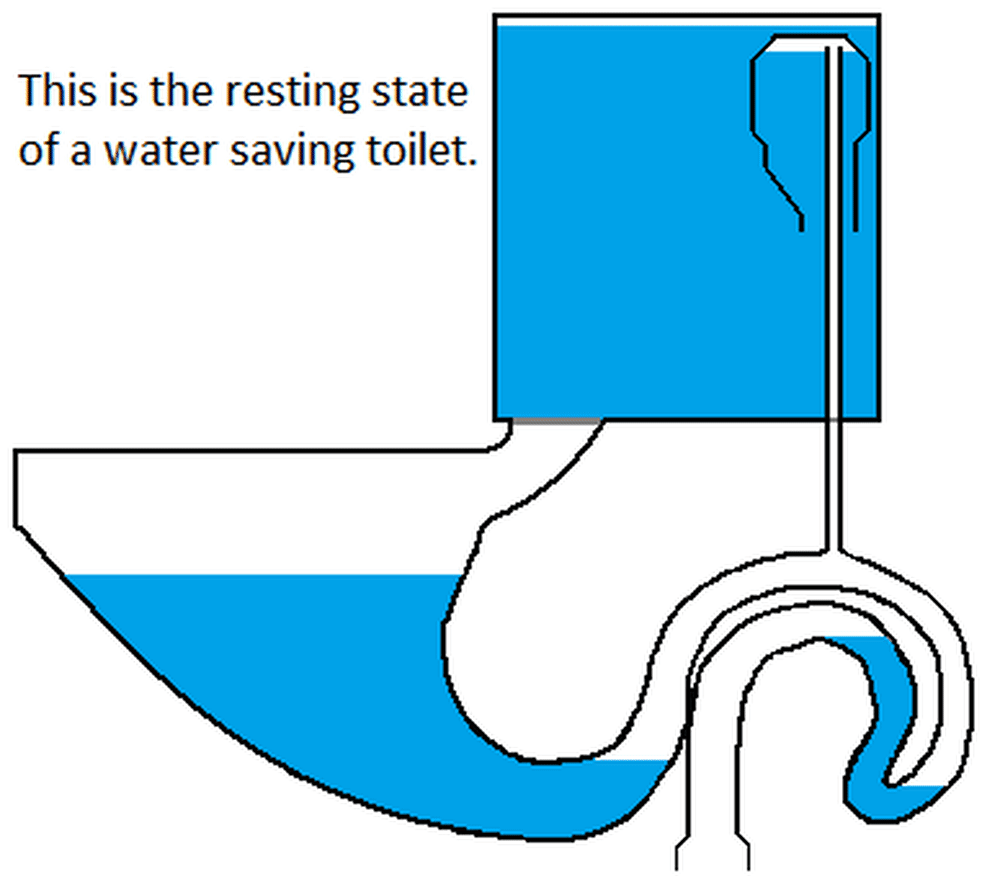Background
Older toilets can use 3.5, 5, or even up to 7 gallons per flush (gpf). Toilets typically account for 30 percent of daily water consumption. The current US national standard is 1.6 gpf, while the California standard is 1.28 gpf. A WaterSense® toilet also uses 1.28 gpf or less while being able to remove 350 grams (about ¾ pound) of material. The 350 grams is based on a 99th percentile load. A MaP PREMIUM product requires 1.1 gpf or less and needs to remove 600 grams (1.32 pound) or more, three times a normal 'demand' upon a toilet.
Innovation
My water saving toilet system uses two traps, an upper and lower trap. When the tank is being filled, the rising water forces air between the two traps and raises the water level in the bowl. When the toilet is flushed and water leaves the tank, a partial vacuum is created between the traps sucking the water and contents from the bowl. The larger lower trapway the allows higher pressure so less water is needed in the bowl and when the tank is being emptied allows for a larger vacuum for superior performance even with less water. With the larger lower trapway (see Fig 1), the vacuum is strong enough that the water from the lower trap will combine with the water upstream to create a strong siphon. This is while having a very quiet system.
My dual flush toilet will use .66 gallons per flush (gpf) during a full flush use and .42 gpf during a partial flush or (.66+2*.42)/3=.5 gpf. It is designed to do this while flushing 600 grams of material, more than 170% of the current WaterSense® requirement and three times a normal 'demand' upon a toilet!
Manufacturing
The single flush system that uses .66 gpf does not need any new manufacturing process only a different manufacturing mold which can be reused many times. Other than the new mold which are typically recreated every two months, this requires no tooling changes. The .5 gallon per flush model needs a proper dual flush system and a different mold. This design is the same cost to produce as current toilets but has water saving and performance benefits.
Environmental Impact
A typical toilet uses about 3.5 gpf. assuming a typical 5 flushes per day uses over 6000 gallons per year (5*3.5*365.25= 6391.875).
Our system uses 1/7 the amount of water an typical older system uses 5*.5*365.25=913.125 gallons per year.
Or a savings of 5478.75 gallons per person per year.
Even a national standard “Water-efficeint” toilet 1.6 gpf or 2922 gallons per person per year. Our system would save over 2000 gallons per year. In addition to the water savings, there are also energy savings from not having to pump as much water or waste material.
Market Potential
There are about 9 million toilets sold per year in the US alone. The savings in water and the savings realized by using less water are enormous.
For more information contact
Like this entry?
-
About the Entrant
- Name:Donald Wagner
- Type of entry:individual
- Software used for this entry:Autodesk Inventor
- Patent status:pending








